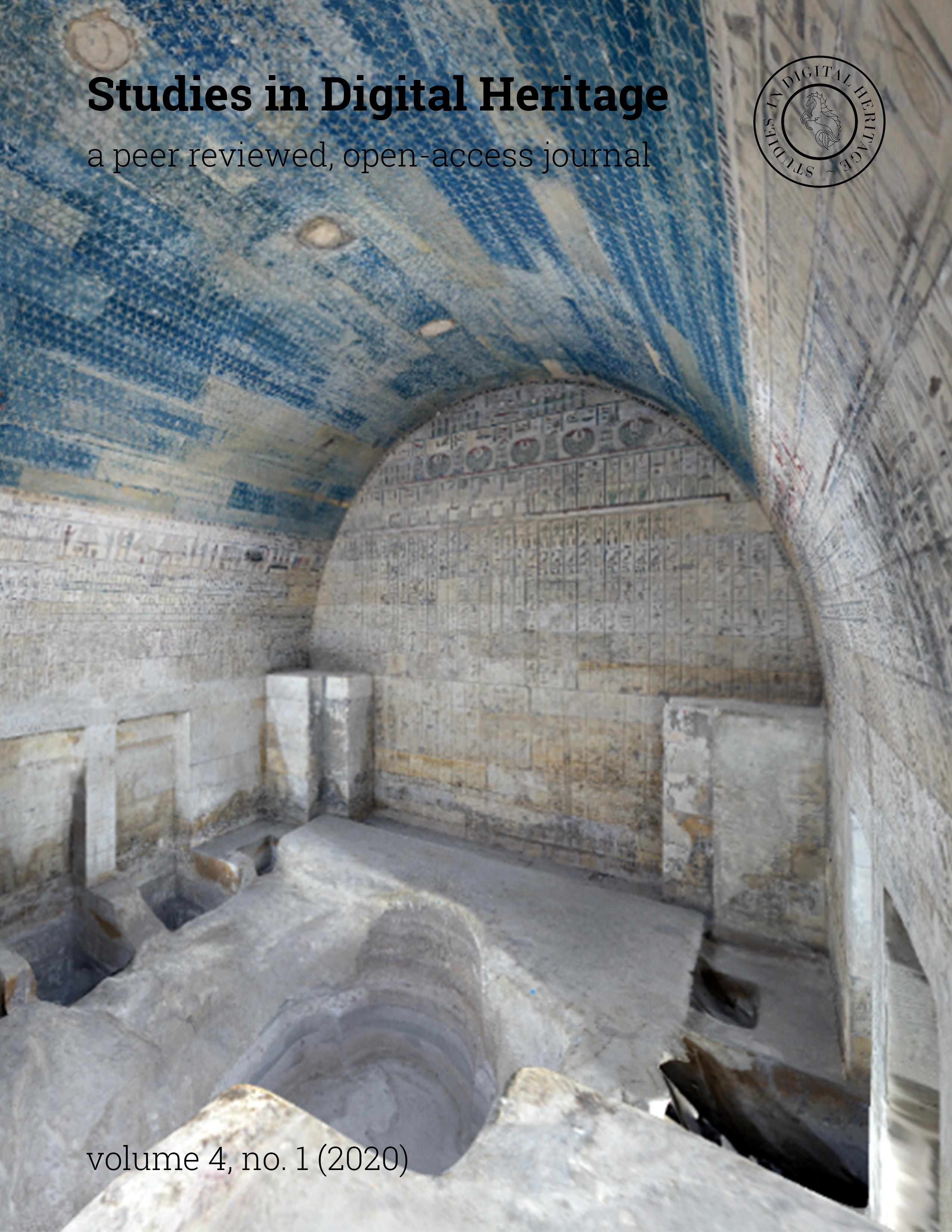Digital Documentation of the Saite Tombs in Saqqara
Main Article Content
Abstract
This paper focuses on the digital documentation techniques employed in the recording of a number of Saite-Persian sarcophagus-tombs in the necropolis of Saqqara (Egypt). In this paper, we discus pros and cons of different three-dimensional technologies for the documentation of a vast site as well as the process of ongoing excavation. We then delve into a discussion of the results and benefits of the employed techniques, particularly understanding the complex spatial relationships of archaeological features both aboveground and underground. Furthermore, we explain how we derive precise scaled and ortho-rectified images of all inscribed walls and objects from the recorded 3D-information in order to produce digital facsimiles. The 3D approach gives us the opportunity to create an exact digital copy of the site, and to record all stages of the excavation. The produced 3D models can be used in various virtual environments in order to give researchers and the general public the possibility to visit and to examine the site from a distance. Also, it is important to note that this paper presents a sustainable long-term data-archiving strategy, since saving the digitally-born data for future generations is an integral part of our Saqqara Saite Tombs Project.
Downloads
Article Details

This work is licensed under a Creative Commons Attribution-NonCommercial 4.0 International License.
From 18 May 2018, the contents of Studies in Digital Heritage are licensed under a Creative Commons Attribution-NonCommercial 4.0 International License (CC BY-NC 4.0). Our submitting authors pay no fee and retain the copyright to their own work.
How this works: to submit their work to the journal, authors grant Studies in Digital Heritage a nonexclusive license to distribute the work according to a CC BY-NC 4.0 license. Once an article is published, anyone is free to share and adapt its contents—provided only that they do so for noncommercial purposes and properly attribute the shared or adapted information. Details of these terms can be found on the Creative Commons website.
Download SDH’s full author agreement here
Studies in Digital Heritage will insert the following note at the end of any work published in the journal:
© [Year] by the authors. This article is an open-access article distributed under the terms and conditions of the Creative Commons Attribution License CC BY-NC 4.0 (https://creativecommons.org/licenses/by-nc/4.0/).


